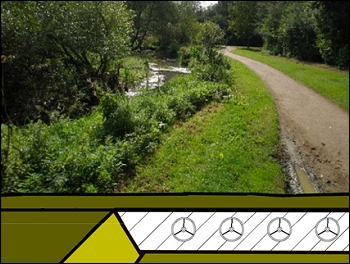Campaigners have proposed a new long distance walking and cycle path as an innovative way of transmitting electrical power from Hinkley Point to Avonmouth – thereby avoiding the need for huge new pylons.
Instead of building a long line of 160ft tall pylons or digging a trench to convey electricity transmission cables, the imaginative plan would see the cables laid at ground level.
Above the cables, a new long-distance pathway would be constructed, which could be used by walkers, cyclists and wildlife.
Burnham’s MP, Tessa Munt, this week welcomed the proposal. She told Burnham-On-Sea.com: “This novel approach to power transmission preserves the environment, rather than degrading the landscape as would be the case with huge pylons.”
“The pathway which could join to the National Cycle Network, would be used by local people and tourists to experience our beautiful Somerset countryside. It is a creative and workable proposal that deserves consideration by National Grid and I believe this is what Somerset people would like to see.”
Paul Hipwell, Chair of the No Moor Pylons campaign group opposed to new pylons being built across the Somerset levels, added: “This is exactly the imaginative and creative idea that this country needs as a way of transmitting electricity safely.”
“It turns a problem into a real opportunity, which would increase tourism and create new jobs in Somerset, while ensuring the secure transmission of electricity that is vital for everyone’s future.”
.HOW ELECTRICITY WOULD PASS UNDER THE PROPOSED PATHWAY
 Two engineers – Dr Hugh Pratt and Chris Ambrose – were commissioned to examine the various options for transmitting electricity over long distances across Somerset.
Two engineers – Dr Hugh Pratt and Chris Ambrose – were commissioned to examine the various options for transmitting electricity over long distances across Somerset.
They propose that Gas Insulated Lines (GIL), manufactured by Siemens AG, the world’s leading electrical engineering company, should be laid in a shallow tray along the ground – as illustrated on the right.
This would be covered by a raised pathway, as in the picture. The pathway could become a new long distance path and cycle way, thus increasing tourism in the area, as well as a green highway for wildlife migration.
It also reduces the cost of construction of long distance power lines because steel pylons or trench excavation are not needed.
GIL technology is not new: it has been in use for over 30 years and is used by the National Grid at two sites in the UK. Siemens has already indicated that, if GIL were to be adopted as the solution for long distance power transmission, the company would build a new factory in the UK, thus creating new jobs.
Somerset’s Alliance Against Pylons has called for the National Grid to seriously consider this proposal and to engage in a constructive debate about innovative – and environmentally friendly – ways to transmit electricity from Hinkley Point to Avonmouth.







